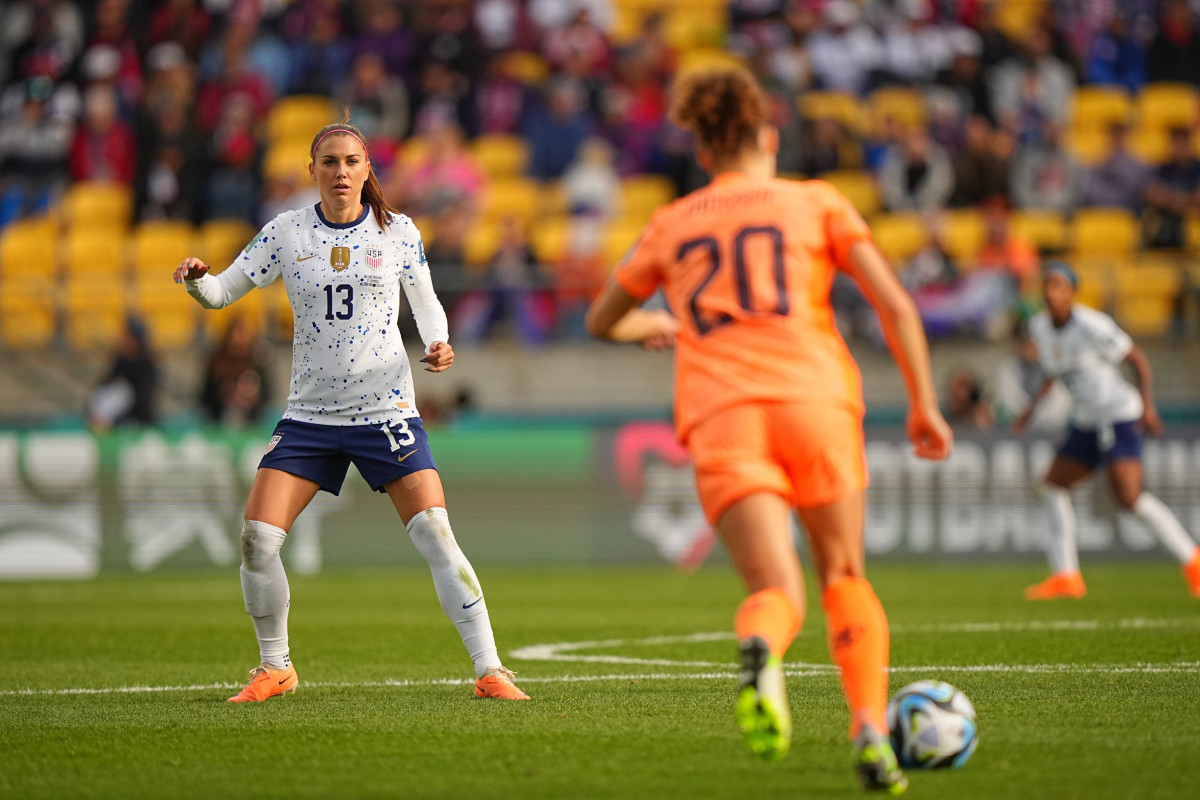USWNT Gets a Real Test (and Some Hard Truths) in Tight Draw With Netherlands
The U.S. women’s national team survived a scare from the Netherlands, walking away from Wednesday’s group-stage game with a 1–1 draw after trailing the Oranje for much of the match. After going down a goal in the 17th minute, the USWNT was forced to play from behind in the Women’s World Cup for the first time since 2011. A dramatic second-half set piece from Lindsey Horan ultimately saved the USWNT from disaster, with the U.S. captain nodding in a corner in the 62nd minute following an impassioned exchange with Lyon teammate Daniëlle van de Donk over a crunching tackle.
LINDSEY HORAN WITH THE EQUALIZER 🇺🇸
— Sports Illustrated (@SInow) July 27, 2023
(via @FOXSoccer)pic.twitter.com/i3EwjkuSir
A rematch of the 2019 World Cup final, the Group E matchup between the U.S. and the Dutch had all the makings of a finale, a physical contest with plenty of lessons, hard truths and wake-up calls presented to the stars and stripes.
Here are three takeaways from the USWNT’s 1–1 draw against the Netherlands.
The USWNT’s midfield woes continue
The Netherlands was always going to be a test for the USWNT’s midfield—composed of Savannah DeMelo in just her second start with the U.S., captain Horan and Andi Sullivan—but the first half of Wednesday’s match was an indictment.
The Dutch wasted no time exposing the USWNT’s frailty down the spine of the pitch, commanding the center of the park. Unsurprisingly then, the Netherlands’ opening goal came from a breakdown in center midfield, with Lieke Martens beating Sullivan, before charging toward the U.S.’s box, with the play culminating into a well-struck shot from Jill Roord.
Hunting for an equalizer, the U.S. began to chase the Dutch around the park as the Netherlands increasingly dictated pace and tempo as the first half wore on, ending the opening frame with 61% of the possession to the USWNT’s 31%. The halftime whistle couldn’t come soon enough for the reigning World Cup champions.
Enter Rose Lavelle. The star midfielder—who is working herself back to full fitness following a knee injury—checked in for DeMelo at the half, injecting the USWNT midfield with much-needed creativity and on-the-ball threat. (Bewilderingly, Lavelle was the game’s only substitute for the U.S.) “We had a good rhythm,” USWNT coach Vlatko Andonvski told Fox on his decision not to go to his bench. Playing more passes through the middle, the USWNT began connecting lines in the second half, as the forwards combined with Lavelle and Horan to create quality chances in the final third.
Still, a massive question looms over the coaching staff: Can the squad manage without Julie Ertz in the midfield? Following the USWNT’s first real test of the tournament, the answer to that conundrum appears to be no. Andonovski would need to slot in Alana Cook next to Naomi Girma at center back to push Ertz up to the No. 6 position, risking chemistry, as the two have yet to line up together this tournament. But at the moment, that move appears to be a risk the USWNT needs to take to shore up the midfield.

Where are the goals?
Finishing continues to elude the USWNT.
The Dutch defenders flocked to Sophia Smith, with the U.S. winger sometimes double- or triple-teamed, leaving space for other USWNT players, but Andonvski’s side never adjusted its line of attack. Smith and Trinity Rodman like to face up and take players one-on-one, but the game wasn’t necessarily calling for that on the flanks, with experienced Dutch players tamping down on their attempts.
Fielding a narrow defensive unit, the Netherlands wasn’t in a compact low- or mid-block, which many of the USWNT’s opponents typically utilize. Instead, there was space to get in behind, which the U.S. began to expose as fullbacks Crystal Dunn and Emily Fox got more involved in the second half. With 18 shots and four on target, the USWNT squandered a handful of dangerous chances in front of the goal. Finding the back of the net has proved difficult for the U.S. as of late, with the final touch escaping Andonovski’s squad as the front line continues to build chemistry. The Netherlands matchup was no different.
In many ways, the game was calling for a player like Lynn Williams, who boasts fantastic defensive capabilities. The Gotham FC forward is known for her suffocating pressure, forcing defensive mishaps high up the pitch. Instead, Andonovski decided to stick, for the most part, with his starters—the exact same lineup from the Vietnam opener—for the entirety of the 90 minutes.
A tale of two halves
The USWNT came out of halftime with a different sense of urgency and cohesiveness following a deflated and unconvincing first 45 minutes. This has been a running theme for Andonovski’s group, with the U.S. growing into games under his leadership (a total switch from the last World Cup squad, which pounced early, often capturing the lead in the opening minutes of a game).
As the tournament goes on and the opponents get tougher, the USWNT can’t afford any more sluggish starts. The squad’s upcoming Group E match against Portugal is already blanketed with a sense of urgency, as the USWNT may need a multigoal effort to rack up the goal differential and emerge as the winner of the group. If the Netherlands pours in goals against Vietnam—a team the U.S. beat 3–0—the USWNT could be facing a tougher side of the bracket come the knockout stages. With a fire lit, expect the USWNT to come out knocking on Portugal’s door.
